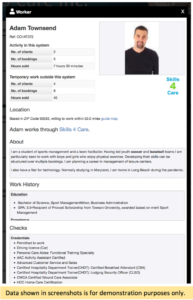 Regular-hours day care no longer works for many parents. Adaptive childcare booked on a local hourly-labor platform creates more options for families. It also brings in new workers.
Regular-hours day care no longer works for many parents. Adaptive childcare booked on a local hourly-labor platform creates more options for families. It also brings in new workers.
How it works
Imagine getting access to a non-public online directory of childcare workers, listed in order of proximity to your home. Each is vetted and supervised, with a local organization as employer-of-record. You can search for providers with particular experience, interests that align with your children’s needs, or track record of work for the school district and other local bodies. Hourly rates are transparent and regulated.
Perhaps you identify three individuals who you like. Over next week you book each of them for a one-hour visit to meet the kids while you stay at home. Then your local labor platform will allow you to see when each of your three are available to work, at your chosen location, each hour from now to ten weeks away. When none of them are, it will suggest the next best matches. Booking care for any hours of need is as simple and reliable as booking a hotel on Expedia. There are timesheets and legal records of work, statements of costs are broken down cent-by-cent, minute-by-minute.
 Many families need at-home care and can’t afford a nanny. They will maximize family and friends arrangements, but every so often Mom’s shift will start before Dad’s ends, a child will be off sick, or there will be a family emergency. They need a few hours of childcare from someone they trust. Maybe they can afford semi-regular assignments, like taking a child bicycling on Saturday mornings? That’s also part of responsive childcare.
Many families need at-home care and can’t afford a nanny. They will maximize family and friends arrangements, but every so often Mom’s shift will start before Dad’s ends, a child will be off sick, or there will be a family emergency. They need a few hours of childcare from someone they trust. Maybe they can afford semi-regular assignments, like taking a child bicycling on Saturday mornings? That’s also part of responsive childcare.
The alternatives to a local platform for this kind of care? Craigslist? Websites like sitter.com? They help parents get to know sitters. But responsive childcare is about instant booking of named workers in an accountable, transparently run, local market, with immediate hour-by-hour visibility.
Public provision
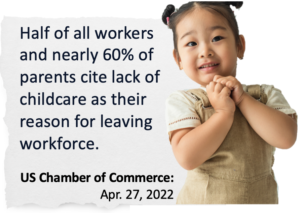 City of Long Beach, CA, piloted responsive childcare for low-income essential workers during the pandemic using our platform. CARES Act funding allowed each qualifying household to be given an initial 40 hours to be used when needed. Skills4Care, the local non-profit, that acted as labor market intermediary, vetted and employed over a hundred workers each of whom had youth leader, teaching, nursing, or other related certification.
City of Long Beach, CA, piloted responsive childcare for low-income essential workers during the pandemic using our platform. CARES Act funding allowed each qualifying household to be given an initial 40 hours to be used when needed. Skills4Care, the local non-profit, that acted as labor market intermediary, vetted and employed over a hundred workers each of whom had youth leader, teaching, nursing, or other related certification.
Everything was monitored. The platform wouldn’t allow overspend but did respond swiftly to renewed allocations of hours, generally given to families who showed the service directly enabled them to go into work. An overall budget was allocated efficiently with outcomes and audits that could be validated in immense detail. After a public hearing about the pilot, the city funded expansion to bring multiple public agencies that buy childcare into the platform.
Long Beach now also uses the platform to deliver state-funded care for households with a developmentally disabled child. That mostly involves the family and friends model: Uncle Bob is hired to provide, perhaps 12 hours of care a week for his nephew the parents need a break. The platform formalizes Bob’s worktimes and responsibilities and, again, ensures his hours are recorded on our app to become a legal record of time devoted to the child.
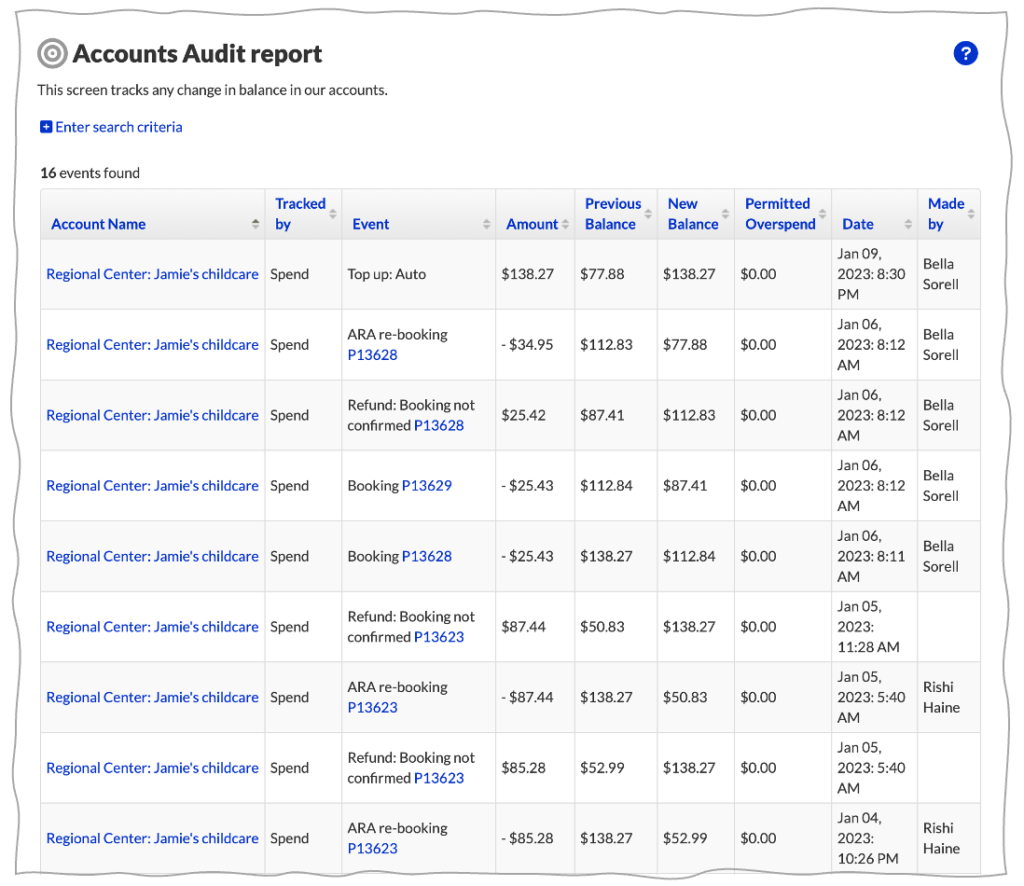
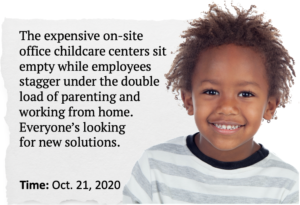 Expanding day care centers
Expanding day care centers
Responsive childcare doesn’t replace traditional provision. It sits alongside it for parents working irregular hours, or who have partial childcare arrangments of their own, or who just want a hyper-localized, bespoke, service perhaps because they don’t drive, or their child has challenging needs. Day care centers could be pivotal in this model.
Where local government launches a sophisticated platform for vetted, supervised, hourly labor, day care managers might chose to position their operation not primarily as a location, but as a diverse community service built around expertise, standards, and networks that will be leveraged beyond their buildings as care for children changes.
So, a day care center could become an intermediary on the platform. Their version of the system could sit within their websites, in their branding, using their terminology, enforcing all their rules, under their control. Their approved workers get the provider’s branded version of the app. There is then a hybrid offering to the community: drop youngsters off at a building and/or have responsive care as needed. Managers would also gain a hybrid workforce, some regular, some working around other commitments in their life, some combining the two.
Connecting the childcare eco-system
Day care centers, the school district, and after-school clubs often compete for the same pool of workers. And many of those people want more hours. But prohibitive enrolment procedures, re-vetting, and then the problems of scheduling a portfolio of employment keeps each person in a silo of limited opportunity.
But the right platform can make multi-source, personalized employment as seamless as regulations allow. Everyone’s standards have to be maintained, but it could be that – as example – if someone has a track record of reliable work as a Recreation Aide in local schools, the YMCA will look at how long their certification has to run and consider revetting them to assist at out-of-school programs. They would do so knowing it was a formality so the investment was worthwhile. And they wouldn’t do it unless the person was showing as seeking more hours. All the admin. of revetting can be tracked on the platform, scheduling then becomes easy.
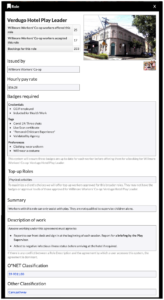 Silos of childcare mask the unique potential of each worker. When we started granular digital badging of childcare providers we uncovered sports enthusiasts, musicians, artists, lived experience with autism, pet lovers, performers, and other life skills that can differentiate workers in a broad market. Kids have wide ranging needs, matching workers more precisely benefits everyone.
Silos of childcare mask the unique potential of each worker. When we started granular digital badging of childcare providers we uncovered sports enthusiasts, musicians, artists, lived experience with autism, pet lovers, performers, and other life skills that can differentiate workers in a broad market. Kids have wide ranging needs, matching workers more precisely benefits everyone.
Should this combined market also be opened to families and companies that buy their own childcare? They could be booking using a local staffing agency, day care center, or community organization as intermediary. Or they could put providers on their payroll.
There may be fears that higher pay will suck staff from public provision. But much private demand is during evenings or weekends, and middle-class parents will likely favor providers who show reliability for – and ongoing supervision by – public agencies. So, workers will be incentivized to stay engaged in public work during mainstream hours.
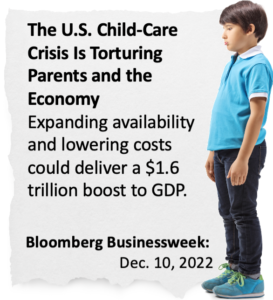 Gains for the economy
Gains for the economy
Most working-age adults outside the labor market are breadwinners with care commitments, for a child or adult. They may try to go out to work periodically using a former spouse, a sibling, or neighbor as a childcare provider. But that safety net could fail at any time. Offering wrap-around childcare for these people with complex lives ensures a constant Plan B for looking after the little ones, even at short notice. That should give a lot of currently hidden workers confidence to seek employment.
And childcare as a profession can be a pathway for residents seeking employment but not a regular hours job. We see people with professional experience – retired teachers for example – who no longer want the daily grind. But they will provide a few hours for families they like around other activities. Again, it’s tapping workers the traditional 9-to-5 model won’t attract.
And an all-sectors local hourly labor platform can use other types of work as a feeder for childcare. As one example, a lot of hospitality staff want to switch out of evening hours as they become parents. The platform can help them taper down their hours in bars and restaurants as their track record of reliability opens doors to childcare training. As always, granular data from the platform can inform vetting, upskilling, and targeting of training offers.
